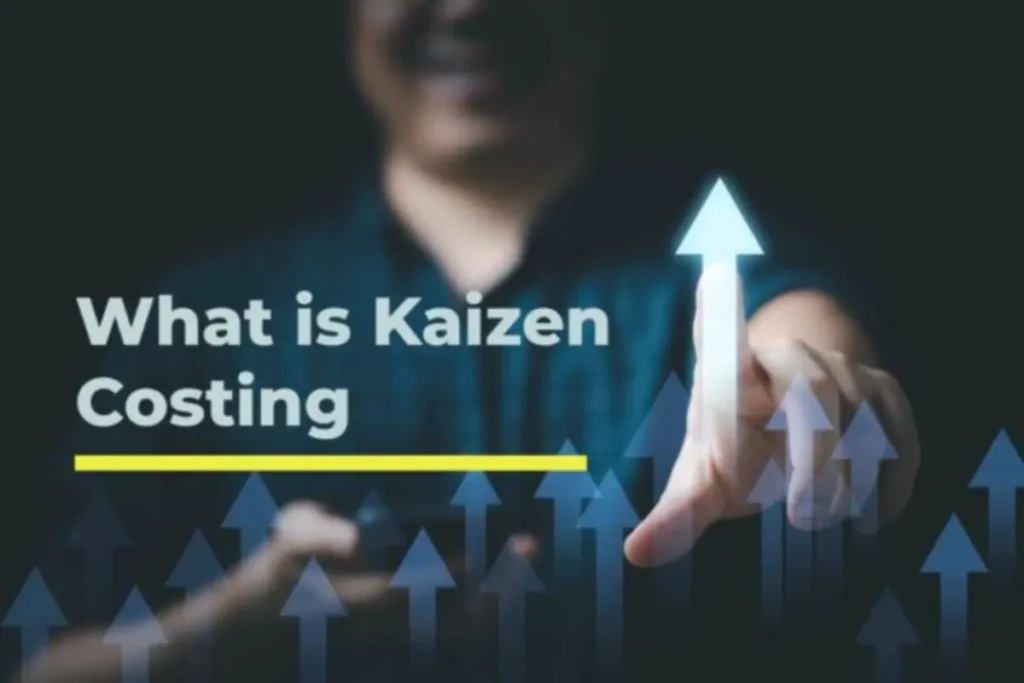Table of Contents
ToggleKaizen costing refers to the process of reducing costs during product production. It is a manufacturing process that involves identifying and eliminating waste in the manufacturing process. This method revolves around suppliers, re-designs, and waste reduction. Kaizen costing focuses on two significant verticals- one for making products and the other for taking care of things the organization owns. This blog will give thorough details of Kaizen budgeting and cost-saving Kaizen ideas.

Image Source: wallstreetmojo.com
Examine Controllable Business Costs
1. Supply Chain Costs- These costs are associated with transportation, inventory, administration, and procurement.
2. Production Costs- Costs related to machinery, equipment, labor, tools, and raw materials are known as production costs.
3. Human Resource (HR) Costs- This approach can manage the expenses associated with recruiting, training, nurturing, and retaining skilled employees.
4. Other Costs- Enterprises can employ the cost reduction strategy to oversee expenses related to obtaining licenses, patents, trademarks, and other legal formalities.

Objectives of Kaizen Budgeting or Costing
As we have discussed before, the main objective of Kaizen costing is to reduce waste and enhance cost deduction. The main agenda is to make sure that all the procedures are not time-consuming and also to reduce costs.

1. Time
Efficient utilization of time is crucial as it equates to financial productivity. Workers should focus on tasks that add value to customers, avoiding engagement in non-value-added activities, which results in resource wastage. An example is when employees dedicate time to resolving conflicts in the working process, causing delays in completing tasks due to raw material shortages.
2. Defected
Every instance of product defects incurs costs, involving material and time wastage on rectifying the flawed item. Repairing and addressing damages may consume additional time. Failure to identify and rectify defective products before reaching customers leads to after-sale issues, necessitating compensation and potentially harming the company’s reputation.
3. Movement
While movement during working hours is common, unnecessary movements within the building contribute to wastage. It is essential to prioritize tasks that contribute to overall productivity rather than aimless movement.
4. Over-processing
Wastage occurs when excessive time is spent on a task without proportional added value. For instance, spending an entire day preparing a meeting agenda for a brief meeting is inefficient. Tasks should be allocated appropriate time, such as around 30 minutes for a concise meeting agenda that provides the same value.
5. Variation
Repetitive production of the same work due to top management requirements results in wastage. Creating a standardized template with detailed information fulfills the needs of various stakeholders. This way, reports only need preparation once a month, streamlining the process and eliminating unnecessary duplications.
Types of Kaizen Costing

1. Product-Focused
The product-specific strategy centers on optimizing the productivity and efficiency of a company’s production process for a specific product line or individual product. This method entails scrutinizing the entire production process, identifying areas of inefficiency and waste, and implementing modifications to improve the overall process.
2. Asset-Centric
The asset-specific cost management technique concentrates on improving the productivity and efficiency of specific equipment or assets used in production. This approach entails identifying assets that contribute to increased production costs or inefficiencies. Subsequently, it involves implementing changes to enhance their performance.
Learn: 5S of Kaizen Principle
Kaizen Costing Process

1. Identification of Opportunities: Identify areas for cost reduction and efficiency improvement.
2. Formation of Kaizen Teams: Create cross-functional teams with expertise in the targeted improvement areas.
3. Setting Objectives: Define specific, measurable, and realistic cost reduction objectives.
4. Data Collection and Analysis: Collect and analyze data to identify inefficiencies and areas for improvement.
5. Brainstorming and Idea Generation: Encourage creative problem-solving and idea generation for improvement.
6. Evaluation of Ideas: Prioritize ideas based on feasibility and potential impact on cost reduction.
7. Implementation: Begin implementing selected Kaizen initiatives, ensuring proper training for employees.
8. Monitoring and Measurement: Continuously monitor progress using KPIs, comparing results to set objectives.
9. Feedback and Adaptation: Gather feedback, make adjustments based on input, and continuously adapt to changing conditions.
10. Documentation: Maintain detailed records of Kaizen initiatives for future reference and share best practices.
11. Recognition and Reward: Recognize and reward employees contributing significantly to cost reduction and process improvement.
12. Communication: Share the results and success stories of Kaizen initiatives throughout the organization.
13. Repeat the Process: As a continuous improvement process, continually seek new opportunities for improvement and cost reduction in different areas.
Cost-Saving Kaizen Ideas-Features

The image above explicitly explains the features of Kaizn Costing.
This approach centers on minimizing various forms of waste throughout the entire product lifecycle, encompassing design, production, and post-sale services. Key contributors to this effort are the employees who play a crucial role in recognizing non-value-added activities and actively working towards their reduction.
The entire staff, aligned with the company’s improvement objectives, demonstrates a strong commitment to their responsibilities. This shared dedication fosters a culture of heightened effort, ultimately leading to a competitive edge. By enhancing product quality and offering it at a more affordable price, we anticipate gaining a larger market share and achieving sustained profitability in the long run.
Conclusion
Kaizen Costing is a crucial methodology that industries have been implementing for ages to diminish unnecessary costs during production and manufacturing. This principle also adheres to strategies that boost employee productivity and the overall efficiency of the workflow. The demand for certified Kaizen professionals is quite high in the market given the utilities they’re offering. Therefore, if you’re looking for professional and top-notch Kaizen training, then Spoclearn provides this as a 1-day instructor-led Kaizen course where individuals and enterprise teams can learn the fundamentals of Kaizen and implement them in their organizations.
